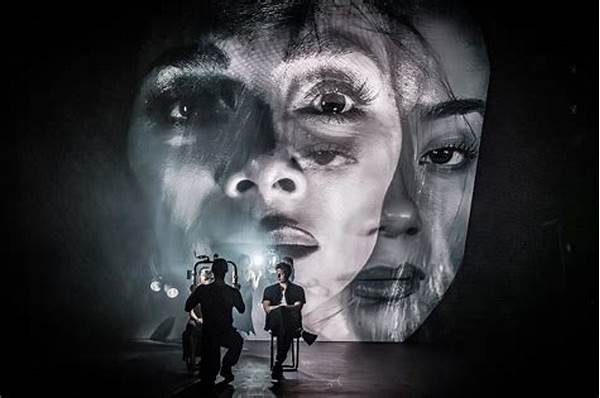In the dim glow of the theater, the world outside fades into oblivion. The air is electric with anticipation, a silent agreement between performers and audience that something magical is about to unfold. As the curtains part for the last time, a crescendo begins—a stirring final scene in a musical where emotions dance as freely as the actors, etching memories that linger long after the applause has faded.
Read Now : Strategies For Choir Vocal Blending
The Power of Conclusion in Musicals
In every narrative, there’s a moment when all paths converge—a climactic resolution that not only ties together loose strands but leaves the heart thrumming in rhythm with the story. This is the essence of stirring final scenes in musicals. These moments encapsulate not just the plot’s culmination but the raw emotions woven through each note and lyric. Imagine “Les Misérables,” where the final chorus echoes with themes of freedom and redemption, characters’ journeys reflecting back at the audience as a mirrored tapestry of struggles and triumphs. Or “The Phantom of the Opera,” where the haunting strains of “The Music of the Night” transform into a poignant farewell, leaving hearts both satisfied and yearning. In these breathtaking conclusions, the grandeur of musicals is not just seen but deeply felt, an emotional symphony that lingers like a sweet refrain.
Evocative Endings that Resonate
1. As the last note rings out, a silence ensues, broken only by the audience’s heartbeat aligning with the legacy left behind—a stirring final scene in the musical they just witnessed.
2. Characters take their final bow, encapsulating personal growth and transformation, a journey deftly etched through stirring final scenes in musicals.
3. When the curtain falls for the last time, a tangible connection remains, as if the story’s essence lingers in the very air—a hallmark of stirring final scenes in musicals.
4. From tears to laughter, the emotional spectrum of stirring final scenes in musicals ensures that everyone leaves the theater with their soul a little lighter.
5. With themes of hope prevailing amidst adversity, stirring final scenes in musicals serve as an enduring reminder of the human spirit’s resilience.
The Artistic Craft of a Musical Climax
Imagine the delicate threads of melody weaving a tapestry of emotions, each note a beacon guiding the audience to a crescendo. Stirring final scenes in musicals are an artistry unto themselves, a masterclass in storytelling. The convergence of choreography, lighting, and score transforms these final moments into a visceral experience. In “West Side Story,” as love defies the constraints of time and tragedy, the final scene offers a haunting melody echoing with the ache of what could have been. Or consider the uplifting finale of “Hairspray,” where dancing becomes a jubilant proclamation of unity and acceptance. These scenes do more than entertain—they bridge the gap between lived experience and imagined worlds, leaving indelible impressions. As the audience exits into the cool night air, the echoes of these scenes accompany them, lingering whispers of tales told in song and dance.
Crafting the Perfect Musical Conclusion
In crafting stirring final scenes in musicals, creators blend an alchemy of elements that evoke unforgettable emotions:
1. Characters: Their journey’s culmination leaves a lasting imprint through stirring final scenes in musicals.
2. Emotions: The emotional crescendo wraps the audience in shared experiences of love and loss.
3. Melody: A harmonious blend that integrates deeply with the storyline.
Read Now : Developing Strong Choir Dynamics
4. Choreography: Dance amplifies the narrative, expressing volumes without uttering a word.
5. Lighting: Highlights and shadows create a mood, underscoring the narrative’s ebb and flow.
6. Costuming: Visual storytelling, adding depth and texture to the characters’ journeys.
7. Themes: Universal themes resonate, transcending time and place.
8. Dialogue: Poignant exchanges that leave a lingering impact long after the final word.
9. Setting: The backdrop is more than a stage—it becomes a character in its own right.
10. Legacy: A stirring final scene in a musical cultivates a lasting legacy in the hearts of its audience.
A Celebration of Closure
The act of closing the musical chapter must strike a balance between completion and lingering questions. Stirring final scenes in musicals offer this sweet paradox. They’re not just about the narrative threads but about the invitation to imagine beyond. In “Wicked,” where Elphaba’s journey challenges perceptions, the final curtain call is not an end but an evolution. Similarly, “Rent” leaves vestiges of love and community, loud in its silence. These finales are a mirror to the audience’s reflection, asking not just what has unfolded but what continues in perpetuity. They transform an evening at the theater into an interplay of reality and possibility—a story’s end that dares to imagine new beginnings.
Reflections and Reverberations
In contemplating the magnetic pull of stirring final scenes in musicals, we’re drawn to their power to encapsulate the essence of human experience. They are vibrant tapestries that tell tales far beyond their pivotal moments. These endings are woven into the fabric of memory, each one a narrative checkpoint. Whether a cacophony of harmonized voices or a solitary note hanging in the air, they speak volumes. In musicals, the finality is only a prelude to the symphony of thoughts and emotions that continue to ripple through each person who witnessed them. With each theatrical pilgrimage, they’re rediscovered, inviting audiences to once more lose themselves and find something eternal amidst the ephemeral.
